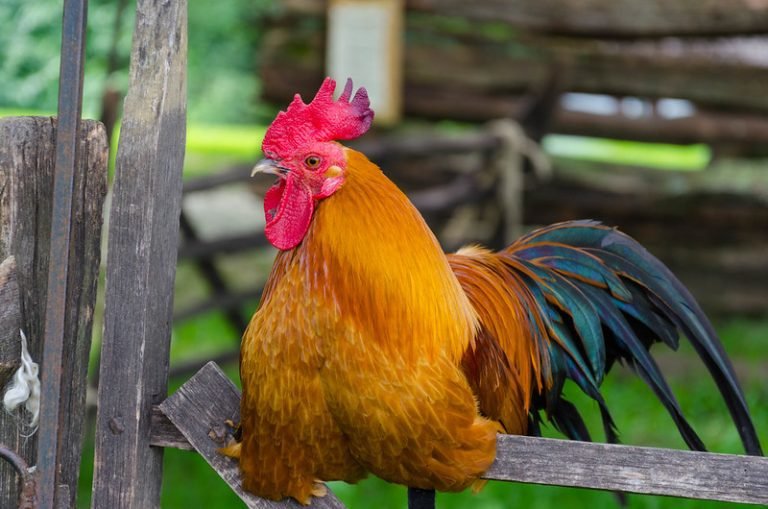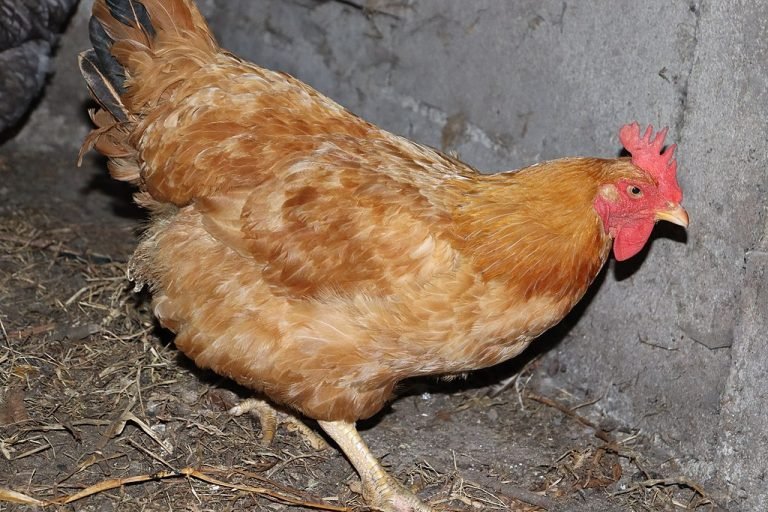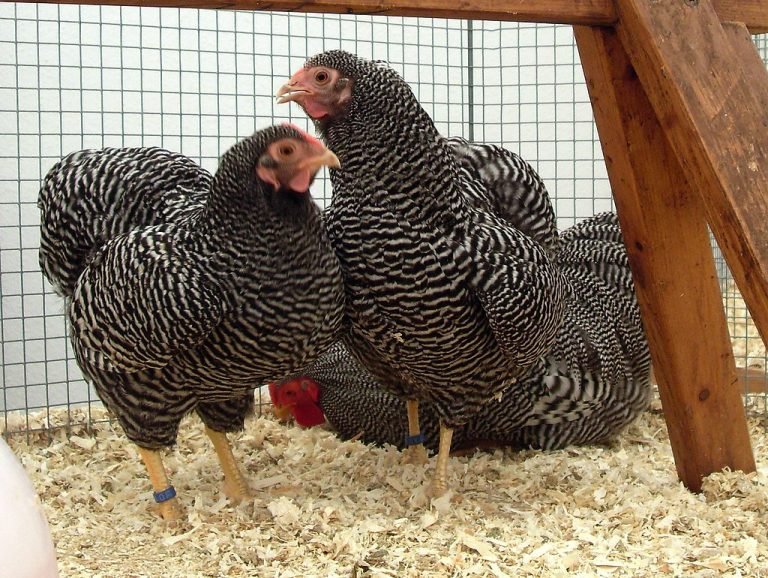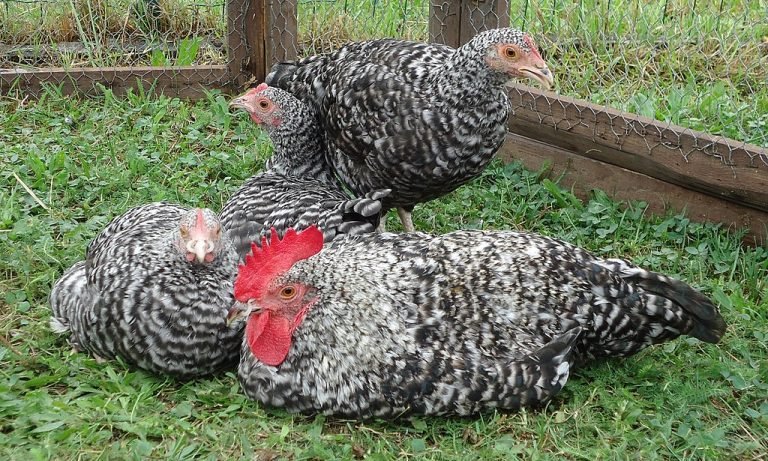The Malay chicken breed is a large, muscular poultry breed that originated in Southeast Asia. It is known for its impressive size, striking appearance, and strong, robust qualities.
With its upright stance, broad chest, and beautiful feathers, the Malay chicken breed is a favorite among poultry enthusiasts. Its characteristics make it well-suited for both exhibition purposes and as a meat bird. Whether you are a poultry farmer or simply interested in learning more about different chicken breeds, the Malay chicken breed offers a unique and fascinating choice.
We will delve into the history, appearance, temperament, and special considerations of the Malay chicken breed. So, let’s explore the world of this magnificent chicken breed and discover why it has gained popularity in recent years.
History
The Malay chicken breed has a rich history, dating back centuries. Known for their majestic appearance and gentle temperament, they continue to be admired by poultry enthusiasts around the world. Discover the fascinating story behind these unique birds.
The Malay chicken breed is a fascinating breed with an interesting history. This breed originated in Malaysia, where it was known for its beauty and grace. Today, it is popular not only in Malaysia but also around the world. Let’s dive into the history of this captivating breed.
Origins And Development Of Malay Chickens
- Malay chickens are believed to have originated in Southeast Asia, particularly in Malaysia, where they were selectively bred for their exceptional qualities.
- The breed is known for its tall stature, upright carriage, and long legs, which set it apart from other chicken breeds.
- Malay chickens were highly valued in Malaysia and were often given as gifts to dignitaries and people of high social status.
- They were also used in cockfighting due to their fighting spirit and physical strength.
Malay Chickens In Modern Times
- Today, Malay chickens are valued for their aesthetic appeal, unique characteristics, and historical significance.
- They are sought after by poultry enthusiasts and breeders who appreciate their exotic appearance and rarity.
- Malay chickens are not prolific egg layers, with hens typically laying around 60 medium-sized eggs per year.
- Despite their lower egg production, they are cherished for their ornamental value and make excellent additions to backyard flocks.
The Malay chicken breed’s rich history and striking appearance make it a captivating breed with a significant presence in the poultry world. Whether you’re fascinated by their origins or drawn to their regal stature, Malay chickens are sure to leave a lasting impression.
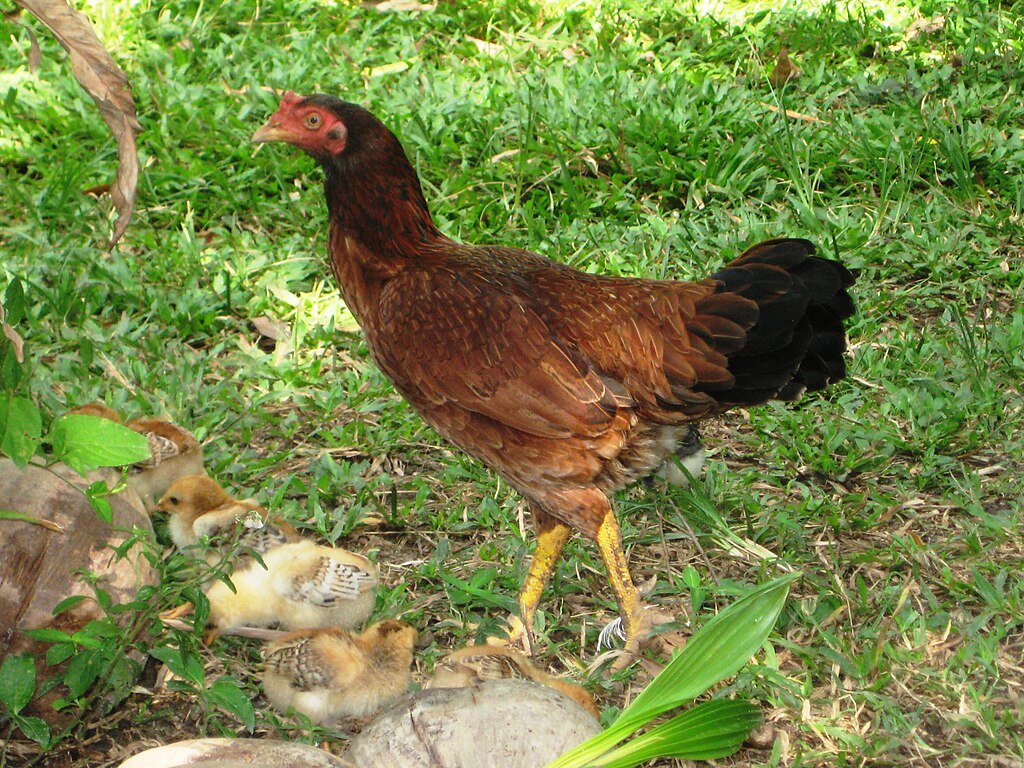
General Characteristics
The Malay Chicken breed exhibits distinctive characteristics with its tall stature, strong bones, and striking appearance. Its broad chest and upright stance make it an impressive presence in any flock. Enjoy the elegance of this breed in your backyard.
The Malay chicken breed is a fascinating poultry breed known for its unique and distinctive features. These birds are quite large and stand tall with an upright carriage. They have an elongated and gracefully arched neck, with a proud and confident demeanor.
Malay chickens have lengthier legs compared to most other breeds and possess well-developed thighs and drumsticks. Here are some key general characteristics of the Malay chicken breed:
- Size: Malay chickens are considered one of the largest chicken breeds worldwide, often reaching an impressive height of over 2 feet.
- Weight: These chickens have a substantial weight, with mature roosters weighing around 9-13 pounds and hens weighing about 6-8 pounds.
- Color Varieties: Malay chickens come in three recognized color varieties: Black-breasted Red, Spangled, and Wheaten.
- Feathers: Their feathers are hard-textured and glossy, clinging tightly to their well-muscled bodies.
- Comb Type: Malays typically have a distinctively large and single comb, which is usually red in color. Their wattles are also quite prominent.
- Egg Production: Although they are primarily bred for ornamental purposes or cockfighting, Malays do lay eggs. However, their egg production is relatively low compared to other breeds.
- Temperament: These chickens are known to be quite active, curious, and assertive. They are known for their independence and can be challenging to handle for inexperienced chicken keepers.
Malay chickens are an extraordinary breed known for their towering presence, striking appearance, and unique characteristics. Their majestic size, distinct color varieties, and assertive temperament make them a captivating addition to any flock. If you’re considering adding a touch of splendor and individuality to your poultry collection, the Malay breed certainly stands out as an excellent choice.
Temperament
Malay chickens are known for their distinctive temperament and behavior. This breed has a unique set of characteristics that sets them apart from other chicken breeds. Whether you’re considering raising Malay chickens or simply curious about their temperament, here are some key points to keep in mind:
Independent Nature
- Malay chickens exhibit a strong sense of independence.
- They prefer to roam freely and explore their surroundings.
- This independence can make them more challenging to handle or train compared to other chicken breeds.
Alertness And Awareness
- Malay chickens are highly alert and possess a keen sense of awareness.
- They are known to be more cautious and observant, constantly watching out for potential threats.
- Due to their vigilance, they make excellent guards for your flock, alerting others to potential dangers.
Tendency Towards Aggression
- Malay chickens are known for their territorial and aggressive nature.
- They can display aggression towards other chickens, animals, or even humans if they feel threatened or challenged.
- It is crucial to provide them with ample space and introduce them to other chickens gradually to avoid conflicts.
Reserved And Shy
- While Malay chickens may exhibit aggression, they can also be shy and reserved.
- They tend to keep their distance and may be wary of human interaction initially.
- Patience and consistent gentle handling can help them become more comfortable and sociable over time.
Dominance Hierarchy
- Malay chickens establish a clear pecking order within their flock.
- They have a strong sense of hierarchy, with dominant birds exerting control over others.
- This hierarchy helps maintain order and structure within the flock.
Active And Energetic
- Malay chickens are known for their active nature.
- They enjoy exploring, scratching the ground, and foraging for food.
- Providing them with opportunities for physical activity and mental stimulation is essential for their overall well-being.
Malay chickens have a temperament that combines independence, alertness, aggression, reserve, dominance, and energy. Understanding these various traits will help you better appreciate and care for these unique chickens. Remember to provide them with appropriate space, socialization, and mental stimulation to ensure a happy and healthy flock.
Comb Types
The Malay chicken breed is known for its distinct comb types, which play a crucial role in both their appearance and functionality. The comb, located on top of their heads, serves various purposes, from regulating body temperature to adding an aesthetic element.
Let’s explore the different comb types found in Malay chickens:
Single Comb
- Most Malay chickens have a single comb type, which is the most common and recognizable.
- The single comb is characterized by a smooth, elongated shape that extends vertically from the chicken’s head.
- It features several evenly-spaced points along its length.
Pea Comb
- Some Malay chickens have an interesting comb variation known as the pea comb.
- The pea comb is smaller and rounder in shape compared to the single comb.
- It consists of multiple small, dome-shaped individual sections that resemble a string of peas.
V-Comb
- Another unique comb type found in Malay chickens is the V-comb.
- The V-comb earned its name due to its distinct inverted V shape.
- This type of comb is relatively straightforward, with two parallel points meeting at the base, forming the V shape.
Walnut Comb
- The walnut comb is a rare comb variation seen in Malay chickens.
- This comb type resembles a walnut with its rounded shape and irregular surface.
- It lacks the defined points of the single comb and instead appears smoother and flatter.
Cushion Comb
- The cushion comb is another uncommon comb type found in Malay chickens.
- It is round and thick, resembling a cushion or pillow.
- This comb type is broader, offering more surface area compared to other comb variations.
The Malay chicken breed showcases a range of comb types, including the single comb, pea comb, V-comb, walnut comb, and cushion comb. Each comb type has its own unique characteristics, both in terms of appearance and functionality. Understanding the different comb types adds depth to our knowledge of this fascinating breed and contributes to its overall charm.
So, whether it’s the elegance of the single comb or the quirkiness of the pea comb, Malay chickens continue to impress with their diverse array of comb types.
Conclusion
To sum up, the Malay Chicken breed is a remarkable choice for poultry enthusiasts and farmers alike. Its stunning appearance and dignified demeanor make it a captivating addition to any flock. With its robust size and natural ability to forage, the Malay Chicken proves to be an efficient forager and valuable in pest control.
This rare breed also possesses a calm and gentle temperament, making it an ideal choice for families with children. Additionally, the Malay Chicken’s rich heritage and historical significance add a unique aspect to its value. Whether it’s for ornamental purposes, egg production, or even meat consumption, the Malay Chicken breed offers versatility and resilience.
By promoting the conservation and appreciation of this breed, we contribute to the preservation of our agricultural heritage. Embrace the beauty and utility of the Malay Chicken breed, and let it flourish in the resurgence of small-scale farming and sustainable living.

